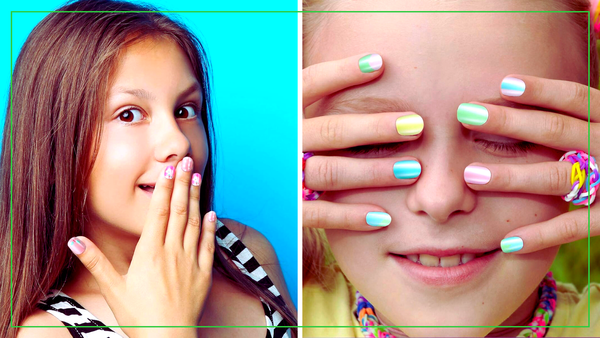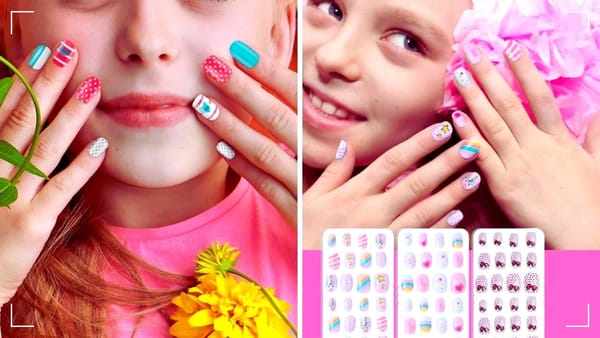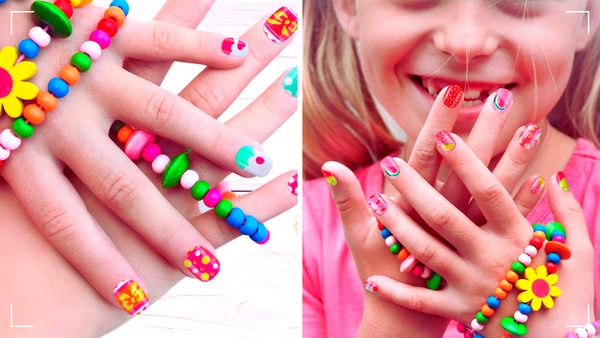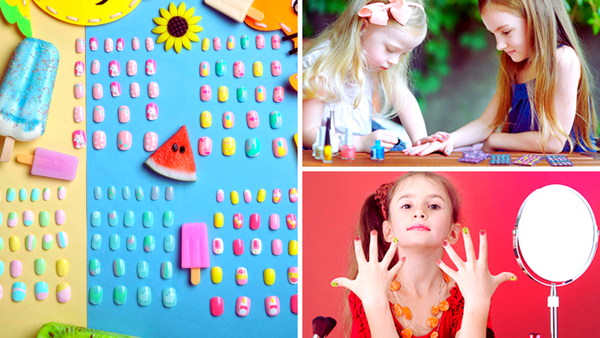Key Takeaways:
- Understanding the potential risks and benefits of children wearing fake nails.
- Insights into age-appropriate nail care and alternatives to fake nails.
- Practical advice for parents considering fake nails for their children.
The question of whether children should wear fake nails has been debated by parents, beauty professionals, and health experts alike. With the increasing popularity of nail art and the desire to mimic adult styles, it's not uncommon to see young children sporting acrylics or stick-on nails. But is this trend harmless fun, or are there hidden risks that parents and guardians should be aware of?
The Appeal of Fake Nails for Children
For many children, the allure of fake nails comes from the desire to emulate adults or older siblings. Just as fun as it is for adults to experiment with nail art and longer nails, kids, too, are drawn to the idea of having beautifully decorated fingers. Special occasions often prompt whether to allow a child to wear fake nails. From birthday parties to school dances, the pressure to look one's best can extend to the youngest of fashion enthusiasts.

However, the question remains: should children wear fake nails? While there's no one-size-fits-all answer, it's important to weigh the pros and cons. On one hand, fake nails can be a form of self-expression and creativity. On the other, they may pose risks to a child's developing body and natural nails.
Health Considerations for Young Nails
The primary concern with children wearing fake nails, especially acrylics, revolves around the health of their natural nails and skin. The application process for acrylic nails involves chemicals and adhesives that can be harsh on young, sensitive skin. Moreover, the removal process can be equally damaging, often involving soaking in acetone or physically prying the nails off, leading to nail bed damage.
Infections are another risk factor. The space between the fake nail and the natural nail can become a breeding ground for bacteria and fungi, particularly if the artificial nails are worn for extended periods. The Queen Victoria Hospital in the UK has reported cases where children have developed serious infections from wearing fake nails.
Age-Appropriate Nail Care
When considering nail care for children, it's crucial to focus on age-appropriate practices. For younger children, painted nails with non-toxic nail polish can be fun and far less risky than applying false nails. Stick-on nails designed for short-term wear can also be a safer alternative for those special occasions, as they are less likely to damage the natural nail underneath.
Parents should also be aware that the urge to bite or pull at fake nails can be strong, especially for kids who have a habit of biting their natural nails. This can lead to accidental ingestion of small pieces of fake nails or glue, a health hazard.

The Social Aspect of Nail Fashion
Beyond the health implications, there's a social dimension to consider. Children wearing fake nails may feel more grown-up, which can be positive and negative. Parents need to have conversations with their kids about beauty standards and self-image. Encouraging children to appreciate their natural beauty and to understand that makeup and nail fashion are not necessary for self-worth is essential.
Additionally, the pressure to conform to certain beauty standards can start alarmingly young. Parents should be vigilant about the messages their children are receiving from peers and media and help them navigate the complex world of self-expression healthily.
Financial and Practical Considerations
The cost of maintaining fake nails can be significant. Acrylic nails require filling every two to three weeks, and the cost can add up quickly. For parents, this is an additional expense that needs to be considered. Moreover, fake nails can be impractical for children's active lifestyles. The risk of nails catching, breaking, or ripping during play is high, leading to pain and injury.
Alternatives to Fake Nails
For parents and children looking for alternatives to fake nails, there are plenty of options. Nail stickers, nail varnish, and even henna designs can provide a fun and temporary way to decorate without the risks associated with fake nails. Engaging in nail art on natural nails can also be a bonding activity for parents and children, allowing for creativity without the commitment to artificial nails.

Summary
In conclusion, while fake nails might seem like a harmless addition to a child's style, there are several factors that parents need to consider. Health risks, age appropriateness, social implications, and practicality all play a role in determining whether fake nails are suitable for children. Alternatives like nail stickers, non-toxic nail polish, and natural nail art offer safer ways for kids to enjoy decorated nails. Ultimately, the decision should be made in the child's best interests, ensuring their health and happiness are the top priorities.
FAQ Section
At what age is it appropriate for a child to wear fake nails?
There is no specific age that is universally appropriate for children to wear fake nails. Parents need to consider the maturity level of their child, their ability to care for the nails, and the potential health risks. Non-toxic nail polish and temporary stick-on nails may suit younger children.
Can wearing fake nails lead to long-term damage to a child's natural nails?
Yes, wearing fake nails, especially acrylics, can lead to long-term damage to the natural nail bed if not applied and removed properly. It's important to ensure that any nail enhancements are applied by a professional and that proper nail care is followed.
Are there any safe alternatives to fake nails for children?
Safe alternatives to fake nails for children include nail stickers, non-toxic nail polish, and engaging in nail art on natural nails. These options allow children to express themselves without the risks associated with artificial nails.








